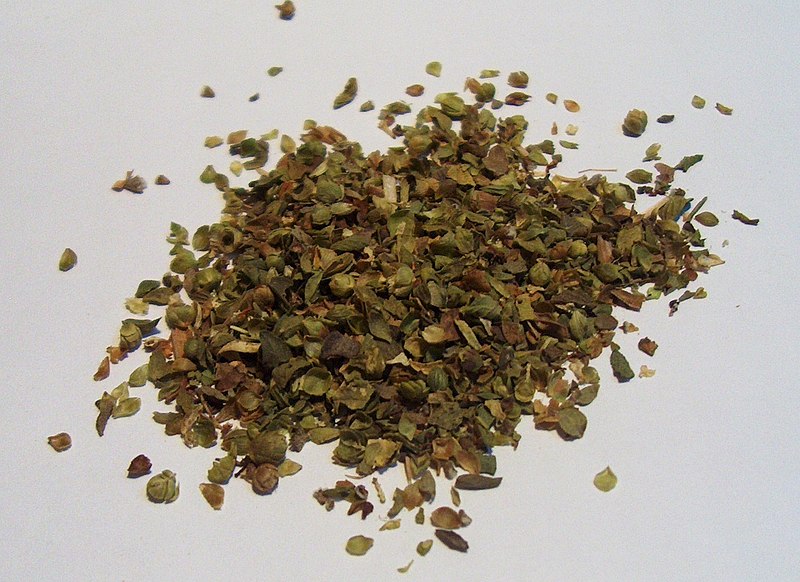Source: Wikipedia
Oregano (UK /ɒrɨˈɡɑːnoʊ/ or US /əˈrɛɡənoʊ/), scientifically named Origanum vulgare by Carolus Linnaeus, is a common species of Origanum, a genus of the mint family (Lamiaceae). It is native to warm-temperate western and southwestern Eurasia and the Mediterranean region.
Oregano is a perennial herb, growing from 20–80 cm tall, with opposite leaves 1–4 cm long. Oregano will grow in a pH range between 6.0 (mildly acid) and 9.0 (strongly alkaline) with a preferred range between 6.0 and 8.0. The flowers are purple, 3–4 mm long, produced in erect spikes. It is sometimes called wild marjoram, and its close relative O. majorana is known as sweet marjoram.
Oregano's most prominent modern use is as the staple herb of Italian-American cuisine. Its popularity in the US began when soldiers returning from World War II brought back with them a taste for the “pizza herb”, which had probably been eaten in southern Italy for centuries. There, it is most frequently used with roasted, fried or grilled vegetables, meat and fish. Unlike most Italian herbs, oregano combines well with spicy foods, which are popular in southern Italy. It is less commonly used in the north of the country, as marjoram generally is preferred.
The herb is also widely used in Turkish, Palestinian, Lebanese, Egyptian, Syrian, Greek, Portuguese, Spanish, Philippine and Latin American cuisines.
Dried Oregano
Fresh Oregano


No comments:
Post a Comment